| Umělec 2003/3 >> END OF THE FAIRY TALE (between the fairy tale and Václav Stratil) | Просмотр всех номеров | ||||||||||||
|
|||||||||||||
END OF THE FAIRY TALE (between the fairy tale and Václav Stratil)Umělec 2003/301.03.2003 Jiří Ptáček | focus | en cs |
|||||||||||||
|
" (between the fairy tale and Václav Stratil) A fairy tale resides within the slants of the consciousness. Comparing it to rational mind is denied, as the end result is always untenable, or at best is only considered an emergence of the structures of the collective consciousness.
However, at the very moment the fairy tale transforms into the one and only order of the world, it is accepted, and victoriously annexes our mind during a disturbance in our normal reflexive abilities. The thing that gives the fairy tale its power of illusion is an underlying foundation of trustworthiness. Representation of the elements of the fantasy is not the deciding factor — rather it is the way in which it is used in forging links to what is established as undisputed, lived reality. Bit by bit the fairy tale changes the features of reality in favor of the ethical imperative, without having to resort to a “mirroring of reality.” Alice was forced to leap beyond a looking glass in order to live through all her peculiar adventures, and for this maybe we should consider whether a certain intellectual poverty on the part of Lewis Carroll is not to blame. But more likely blame should be placed on his assumed readers, who had to be led out of reality through a trick of “mirrors.” In this way, the fairy tale floods the borders of our normally insurmountable dogma, and it shows how the it can only be experienced beyond these imaginary borders. Therefore Carroll’s “mirror trick” could by considered an imaginary hammer to the thick hide of the bourgeois, and the only fault is that the word appears in the title. For, abusing the tricks of the images of reality is one of the basic tactics of every fairy-tale narrator. The fairy tale works with everyday (para-rational) experience more than it may seem at first sight. And controlling our everyday experience is a tall order. Incidentally, this is capable of showing us that control over our own mind is fragile and vulnerable, and the fairy tale is capable of destroying this control and anchoring our minds within it. But every fairy tale comes to an end: a withdrawal of its principles, a gradual or sudden collapse into the nature of the world. Like hallucinogens, the hangover after experiencing the fairy tale is mild; there is just a transition to a different version of experience. The pieces are carefully reassembled back into the original stained-glass window, and the remembering person, just like the restorer, is doomed to wind up his messy patchwork and vague retouching. Only the memory of the fairy tale will become the product of dream activity, but its original effect depends on submission and passivity. What is fascinating is that the fairy tale is a projection screen of human desire, and an accelerator of associative links. And the author and narrator — as the only movers of this relationship — are denied the seductive power of the fairy tale, because they are the ones who sprinkle in the life-giving ingredients. Thus understood, the fairy tale crosses the borders of the genre, and especially the narrow vision of the children’s bed-time story. The fairy tale fills the thoughts of the adult on all levels, and these effective tools are more refined versions of ideological propaganda and scientific popularization, etc. If it is often ascribed as being a “substitute for myths” or “cosmological renewal,” then it is once again the ending which demonstrates that it is also a delightful lurch off the well-trodden path of pragmatism. At least this is true of the fairy tales made up for children (spoken, written or in films). But what about present-day narrators? What are they after? Regardless of the number of copies made or the size of the format, their mission is to show parallels in the birth and death of the fairy tale. Children’s hands run deep The fairy-tale illustrator is a different breed from the story creator. Psychological strategy keeps the imagination reined in. This is how it is with Václav Stratil. His “fairy tale phase” occurred after he’d considered the esthetic postulates of the society, the state of art culture and equally the search for expressive means for his main theme: the recording of his shifting position within this field. For that matter, only a group of a few dozen of his drawings, mostly figurative or partly figurative, rightly belong to the category of the fairy tale, and the others can be observed through the optics of reference and commentary on modernism. It is an intimate and visual history, a mixture of spiritual codes. Showing a whole generation of his drawings would take up extensive space and would shift focus away from an important level which puts Václav Stratil among the visual narrators-seducers. I consider this level in the fairy tale as necessary: the establishment of communication and assuming the leading role for the purpose of creating a world of rules; showing the key that is the secret code to the resulting absorption of attention of the autonomous world of the creator’s imagination. After experimenting with felt-tips, Stratil found a more suitable media in colored pencils for his series. These became the primary layer for his altogether cunning seduction. Colored pencils are a direct catalyst of memories from childhood, of scribbling on paper. They can’t be used otherwise, as they are always closely tied to the experience of being a child. Memories of joy-filled and free creation blankets work drawn in colored pencils. We could say that the appropriation of reality during the unrestrained formation of the individual’s personality fuels children’s creativity, and that oftentimes we can see the incorporation of the outside influences, more so than any inner intoxication. But then we get by with the adult nostalgia for the forever lost, half-forgotten and (understandingly) exaggerated time of “no responsibilities and no obligations, when things came to us untouched as freshly fallen snow.” And these models of understanding shake society, individual reflections and history much more than any kind of reasonable contemplation is capable of. If the fairy tale remains analogous to the realm of youth, Stratil’s drawings are hooked into this nostalgia and become drawings of the return, traps made out of the longing to find the chimera. Mica and the strawberry shallows We admire the unconventional linking of motifs in the expression of children’s art. Once again out of the corner of the eye we are able to spot ourselves. Children don’t perceive disparateness as troublesome. At first sight Stratil’s drawings look to contain something similar. Jesus on the cross is accompanied by a red fox. The Son of God smiles down at us with no sign of pain. Above him the dark night sky looms, scattered with stars, but a bright light illuminates the spectacle. And then there is the portrait of a boy whose eye whites have turned yellow (!) and a third ear is growing from his neck. Stratil’s grasp of disparateness lies entirely in his layering of symbols. On the other hand, the drawings harmonize color tones, surfaces, lines and their gesture expressions into a single unit. This gives them a unique atmosphere necessary to attain the feeling of perfect harmony. The artist wishes to avoid dissension, brutality and radical action, typical elements of the fairy tale. Instead he implements a soothing lyricism and sentiment. Václav Stratil shows that he is a master at the careful retrieval of milky and mica tones, a master of compositions that grow out of the main theme accompanied by stylish digressions that never develop into dissonance. He comforts us and lets us wade in the warm strawberry shallows, with no threat of falling into the flaming tar of the deeps. He lets us see his lullaby pictures. The end of the fairy tale: the dangerous reaches of the hedonistic giant If the fairy tale functions through the conflict of good and evil, including the predestined dominance of the first, and its format can be considered ethical, then Václav Stratil’s drawings don’t allow for the depiction of duality. This would require violating this comforting atmosphere. Nothing remains but to reveal the fairy tale in its final version, in its victory over evil, in its absence. The fairy tale has ended and once again we find ourselves in paradise restored. The fairy tale has ended because it no longer has its own development — in fact, it never had it. Blissful goodness spreads over the land. The tricks of seduction were performed only to convince us that the fairy tale is to remain unreachable. These drawings intend to convince us of something other than of the meaning of the fairy tale itself. Its attributes and tricks are used to momentarily accomplish the utopian construct of happiness within us, without frightening us or us analyzing it. Here the fairy tale is a modus operandi with orientation towards the modus vivendi, a mystery wrapped in an enigma. The dangers that arise while putting this into practice are thankfully avoided due to the reality of the social impact of the art. Václav Stratil doesn’t expect a change to occur in the mind of one who has seen his pictures in the gallery, and anyway this would not make him happy. He only moves within the fairy tale of seeming freedom and sentiment with the courage and experience of a conjuror who enjoys approaching the limits of a chosen theme. "
01.03.2003
Рекомендуемые статьи
|
|||||||||||||
|
04.02.2020 10:17
Letošní 50. ročník Art Basel přilákal celkem 93 000 návštěvníků a sběratelů z 80 zemí světa. 290 prémiových galerií představilo umělecká díla od počátku 20. století až po současnost. Hlavní sektor přehlídky, tradičně v prvním patře výstavního prostoru, představil 232 předních galerií z celého světa nabízející umění nejvyšší kvality. Veletrh ukázal vzestupný trend prodeje prostřednictvím galerií jak soukromým sbírkám, tak i institucím. Kromě hlavního veletrhu stály za návštěvu i ty přidružené: Volta, Liste a Photo Basel, k tomu doprovodné programy a výstavy v místních institucích, které kvalitou daleko přesahují hranice města tj. Kunsthalle Basel, Kunstmuseum, Tinguely muzeum nebo Fondation Beyeler.
|







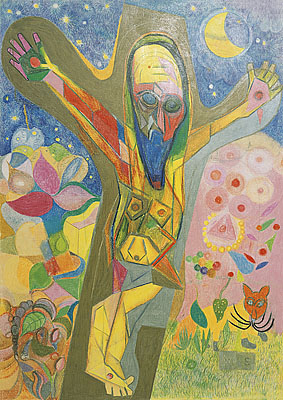















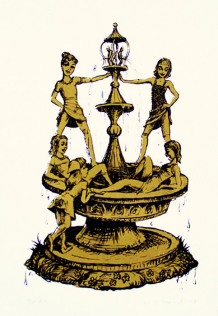





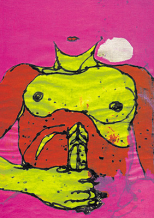
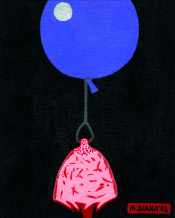
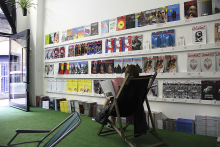


 We Are Rising National Gallery For You! Go to Kyjov by Krásná Lípa no.37.
We Are Rising National Gallery For You! Go to Kyjov by Krásná Lípa no.37.
Комментарии
Статья не была прокомментированаДобавить новый комментарий